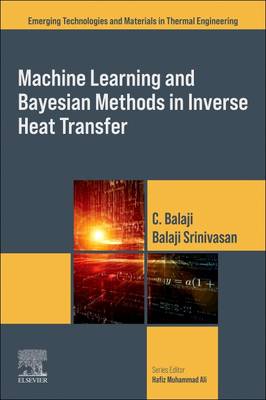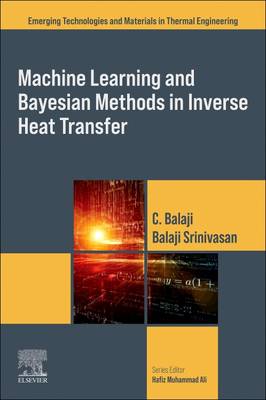
- Afhalen na 1 uur in een winkel met voorraad
- Gratis thuislevering in België vanaf € 30
- Ruim aanbod met 7 miljoen producten
- Afhalen na 1 uur in een winkel met voorraad
- Gratis thuislevering in België vanaf € 30
- Ruim aanbod met 7 miljoen producten
Zoeken
€ 288,45
+ 576 punten
Omschrijving
Machine Learning and Bayesian Methods in Inverse Heat Transfer offers a comprehensive exploration of inverse problems in heat transfer, blending classical techniques with modern advancements in machine learning and Bayesian methods. This essential guide provides a hands-on approach with practical examples, making complex concepts accessible to readers seeking to deepen their understanding of this critical field. The text covers essential topics including Introduction to Inverse Problems, Statistical Description of Errors and General Approach, Classical Techniques, Bayesian Methods, and a Machine Learning Approach to Inverse Problems. Readers will explore key concepts such as Gaussian distribution, linear and non-linear regression, Gauss-Newton algorithm, Tikhonov regularization, and more, gaining a solid foundation in applying these methods to real-world heat transfer scenarios. For engineers, scientists, senior undergraduates, graduates, and researchers in heat transfer and related fields, this book serves as a vital resource. By offering clear explanations, practical examples, and MATLAB codes, it empowers readers to tackle inverse problems with confidence. Whether readers are practicing engineers or graduate students specializing in heat and mass transfer, this book equips them with the tools and knowledge to excel and further advances in their field.
Specificaties
Betrokkenen
- Auteur(s):
- Uitgeverij:
Inhoud
- Aantal bladzijden:
- 310
- Taal:
- Engels
- Reeks:
Eigenschappen
- Productcode (EAN):
- 9780443367915
- Verschijningsdatum:
- 1/03/2026
- Uitvoering:
- Paperback
- Formaat:
- Trade paperback (VS)
- Afmetingen:
- 152 mm x 229 mm
- Gewicht:
- 449 g

Alleen bij Standaard Boekhandel
+ 576 punten op je klantenkaart van Standaard Boekhandel
Beoordelingen
We publiceren alleen reviews die voldoen aan de voorwaarden voor reviews. Bekijk onze voorwaarden voor reviews.








